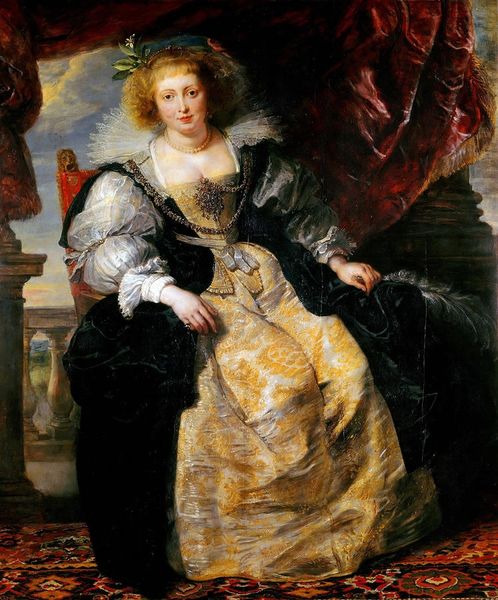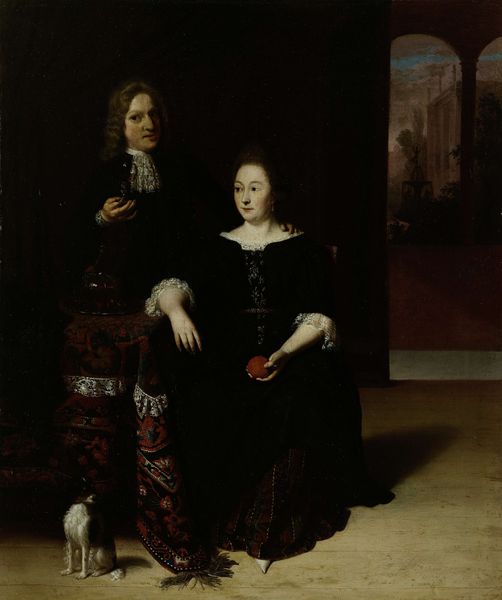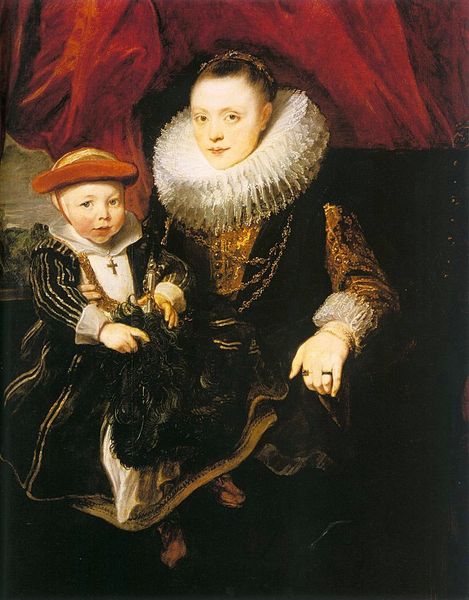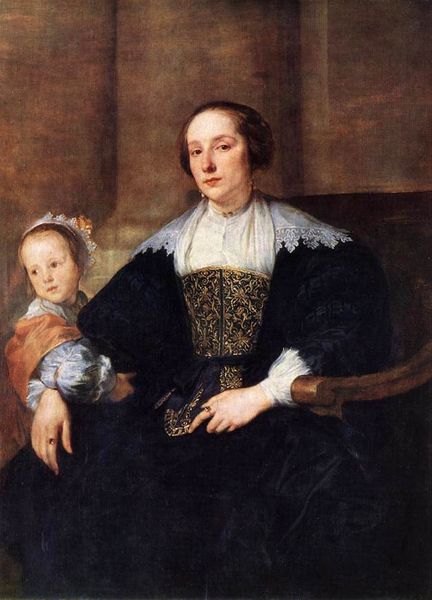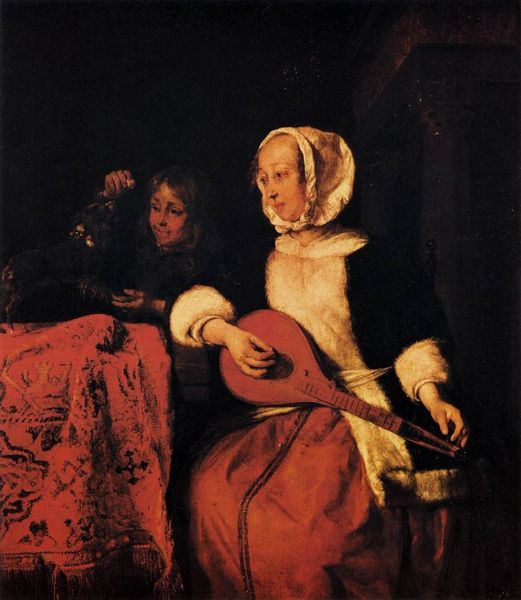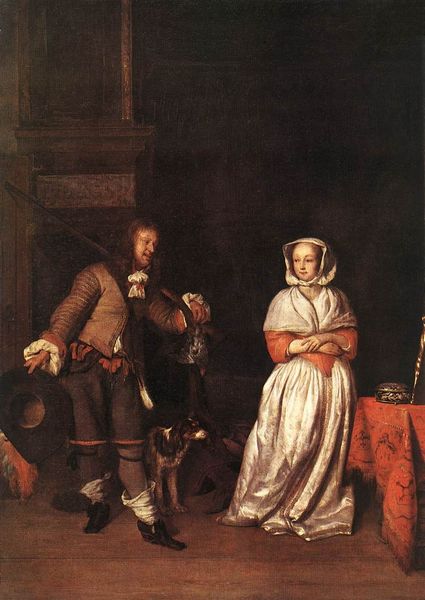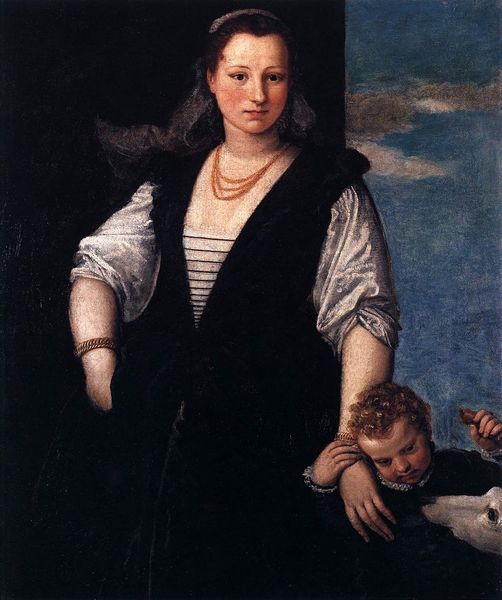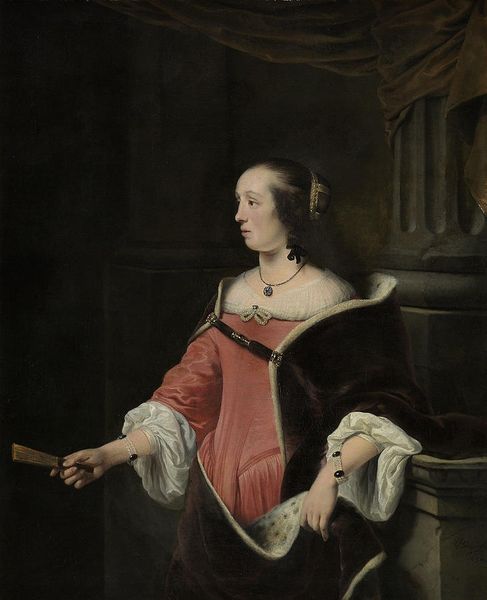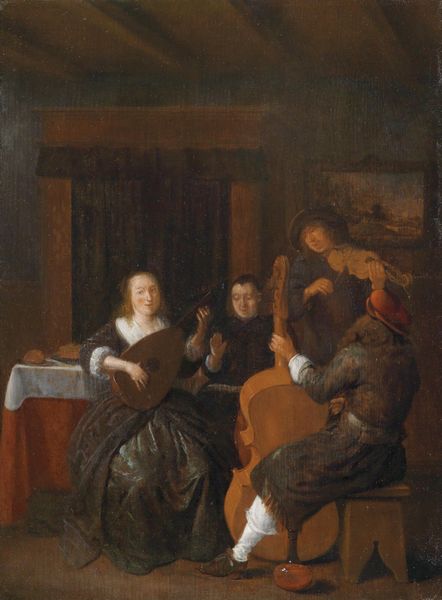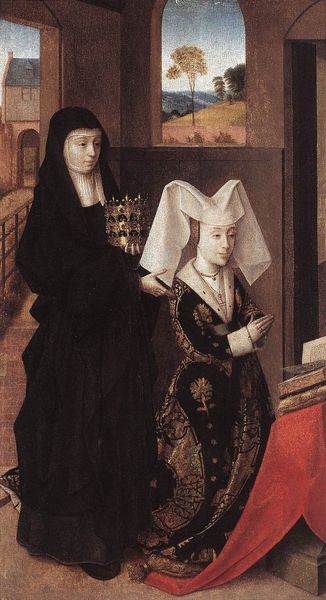
Portrait of Porzia Imperiale and Her Daughter 1628
0:00
0:00
anthonyvandyck
Royal Museums of Fine Arts of Belgium, Brussels, Belgium
painting, oil-paint
#
portrait
#
baroque
#
painting
#
oil-paint
#
group-portraits
Dimensions: 184 x 134 cm
Copyright: Public domain
Editor: So, here we have Anthony van Dyck's "Portrait of Porzia Imperiale and Her Daughter," painted in 1628. It's quite striking, almost somber, despite the richness of the fabrics and details. I am particularly interested in how the harpsichord almost stands as another figure in this painting. What do you see in this work? Curator: I see a fascinating negotiation of power and gender within a very specific historical context. Look at the clear distinction between the mother and daughter, emphasized by their attire. The mother, Porzia, is draped in black, signifying power, wealth and authority, a widow perhaps. While the daughter's white satin dress and placement at the harpsichord implies a different expectation: cultivated passivity, perhaps awaiting marriage. Editor: So the clothing functions as a form of language, telling a story about their roles in society? Curator: Exactly. And consider the harpsichord. Is it merely a prop indicating refinement, or is it hinting at the limited avenues available for women's expression at the time? The inscription is difficult to read, however this instrument also implies social expectation. We could explore this in the context of feminist readings of art history: how women were often depicted within the domestic sphere, their identities closely tied to their roles within the family and how this representation reinforced patriarchal structures. How do you interpret their gaze? Editor: It is hard to miss. There is an awareness there that is powerful in different ways. Porzia, more resolute and assertive, while the daughter seems observant, almost melancholic. Curator: Yes. Van Dyck was known for his ability to capture the psychology of his subjects, and I think here, he gives us a glimpse into the complexities of womanhood, duty, and inheritance within a very rigid social order. It speaks volumes about their agency, or perhaps lack thereof, within that system. Editor: I am really rethinking my initial impressions! I was caught up in the visual drama of the painting but now appreciate its layers of meaning, particularly as related to the portrayal of women in Baroque society. Thanks so much for pointing that out. Curator: Absolutely. By engaging with historical and theoretical frameworks, we can unpack the silent narratives embedded within these images.
Comments
No comments
Be the first to comment and join the conversation on the ultimate creative platform.

